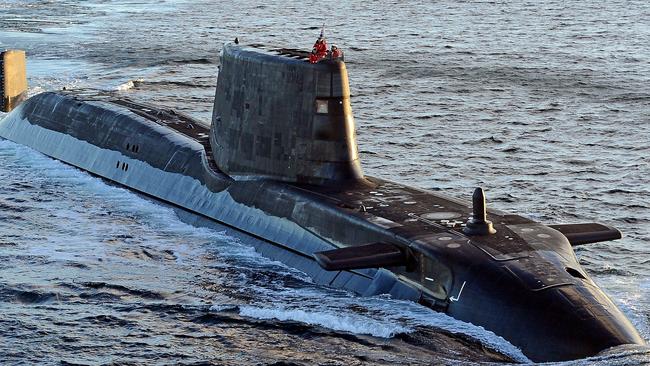Defence strategy sunk without a clear assessment

The processes during the past 1½ decades leading to this decision have been embarrassing. First there was the delay in deciding on the Collins-class extension and post-Collins requirements; then came the announcement that Australia would buy Japanese subs; then, after an ill-defined competitive assessment, there was the announcement that Australia would procure French subs; and now comes this latest plan.
As federal Finance Minister Simon Birmingham admits, we don’t know the costs; neither do we know the risks. We therefore don’t know the opportunities forgone if the money were spent on other defence capabilities, or the consequences should the risks involved lead to further costs, delays and gaps in our defence capability.
The 2008 Audit of the Defence Budget led by independent consultant George Pappas set out in detail the processes required for identifying strategic requirements and translating these into procurement priorities. His recommendations were aimed at strengthening the framework espoused in Defence to maximise the capability to defend Australia from the funds available.
The process should start with a proper strategic assessment looking two or more decades ahead, reviewing capabilities in our region and possible adverse intent that might threaten our interests.
This leads to identifying the capabilities we require to respond to or deter possible threats. Those capabilities must then be carefully translated into the equipment, platforms (ships, aircraft) and personnel required. Procurement, preferably by open competition, is then based primarily on the desired capability, although it is increasingly portrayed as particular equipment and platforms.
Each step requires careful consideration of costs and trade-offs; also constraining those inside keen to have favoured products and those outside keen to benefit from the largesse involved. Risks also need explicit assessment.
While there have been several defence strategies released in the past two decades, most recently in 2016, the discipline these are meant to impose does not seem to have applied with respect to the biggest single investment being made. Some have argued that the 2016 assessment that war is unlikely in the next 20 years is not the assessment we would make now, and that an updated assessment would justify this shift in investment priorities.
But we do not have a properly developed new strategic assessment and hence the means to test these arguments. China’s intent may have moved adversely, but whether to the extent some suggest has not been assessed dispassionately. And long-term investments arising from defence strategies should focus primarily on the capabilities in our region, not intent.
The increase in China’s capability was well known in 2016 and further increases were predicted.
Such increases in capability shorten warning times should intent change, justifying increases in defence spending including on long-term investments. A change in intent does not of itself justify a significant increase in long-term investments: it primarily affects the deployment of existing assets and shorter-term investments to expand the capacity of those assets (for example, by additional personnel). It also demands increased investment in diplomacy.
If nuclear-powered submarines and the additional capabilities they offer in 20 or more years are justified now, why were they not endorsed in the 2016 defence white paper? Or, if circumstances have changed so much regarding China’s capability and intent, why haven’t we seen an updated strategy? The answer presumably is that the option of US or British nuclear-powered subs not requiring us to produce our own fuel rods was not open in 2016, and the window for taking this option was narrow given the imminent new commitments to French boats.
While that may explain the lack of an updated strategy, it does not excuse the failure now to answer the sorts of questions such a strategy and subsequent disciplined processes would have demanded, including:
• What are the additional capabilities the nuclear-powered submarines offer, why are they needed and can we be sure the costs involved represent value for money over alternative ways of achieving those capabilities (such as by conventional submarines)?
• What factors led to a greater emphasis on range and speed over more boats?
• What domestic support will these nuclear-powered boats require to ensure autonomy over their deployment? What risks are posed by the absence of a domestic nuclear industry and how will they be managed?
• How will the costs be controlled? How will the overall contractor be chosen and how will they subcontract with the US suppliers?
• How will the Australian content be determined and at what cost?
• What upgrades to the Collins boats are required and for how long, and with what risks as China’s technical capability to detect submarines increases?
• If we lease US submarines, how locked in are we to US policy demands and restrictions?
The risks that must be managed are not only about escalating costs but also about a further gap in our defence capability in the 2030s and possibly beyond. Parliament and the public need answers to these questions, and to hold the government to account for the money involved and the failure of good process.
Andrew Podger is professor of public policy at the Australian National University. He is a former secretary at three federal departments and former Defence deputy secretary in charge of acquisition and logistics.


Nuclear-powered submarines are the biggest investment by an Australian government, yet on the information available it is not possible to know if they are the right investment. Perhaps they are, but the public is being asked to accept it on faith and jingoistic claims about addressing Chinese threats, not on the basis of careful analysis shared and debated.